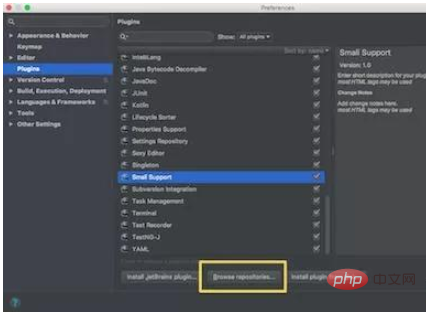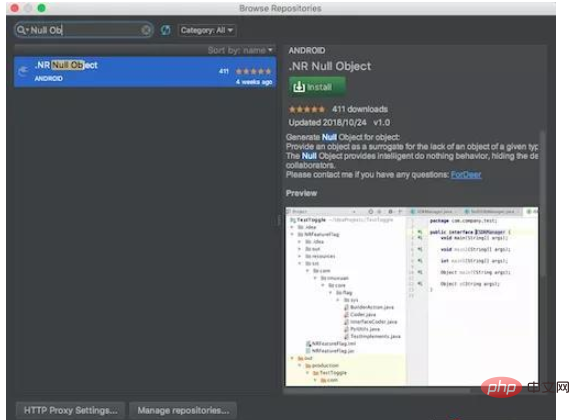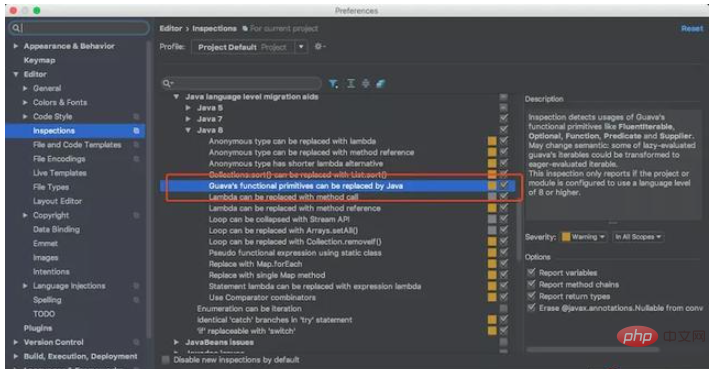How to implement empty judgment in Java
NullObject Mode
Countless null judgments in the project have had a very bad impact on the code quality and cleanliness. We call this phenomenon "null judgment disaster".
So, how to manage this phenomenon? You may have heard of the NullObject pattern, but this is not our weapon today, but we still need to introduce the NullObject pattern.
What is NullObject mode?
In object-oriented computer programming, a null object is an object with no referenced value or with defined neutral ("null") behavior. The null object design pattern describes the uses of such objects and their behavior (or lack thereof).
The above analysis comes from Wikipedia.
The NullObject pattern was first published in the "Programming Pattern Language" series of books. Generally, in object-oriented languages, you need to use a null check before calling objects to determine whether these objects are null, because the required methods cannot be called on null references.
The sample code is as follows (the name comes from the Internet, haha, how lazy is it):
Nullable is the related operation interface of the empty object, used to determine whether the object is empty, because in the empty object mode , if the object is empty, it will be packaged into an Object and become Null Object. This object will implement null implementations of all methods of the original object...
public interface Nullable { boolean isNull(); }This interface defines the behavior of the business object.
<br>
public interface DependencyBase extends Nullable { void Operation(); }This is the real class of the object, which implements the business behavior interface DependencyBase and the empty object operation interface Nullable.
public class Dependency implements DependencyBase, Nullable { @Override public void Operation() { System.out.print("Test!"); } @Override public boolean isNull() { return false; } }This is an empty object, which implements the behavior of the original object.
public class NullObject implements DependencyBase{ @Override public void Operation() { // do nothing } @Override public boolean isNull() { return true; } }When in use, the empty object can be called through factory calling, or the object can be called through other methods such as reflection (usually taking a few milliseconds), which will not be described in detail here.
public class Factory { public static DependencyBase get(Nullable dependencyBase){ if (dependencyBase == null){ return new NullObject(); } return new Dependency(); } }This is a usage example. Through this mode, we no longer need to perform the null operation of the object, but can use the object directly without worrying about NPE (NullPointerException).
public class Client { public void test(DependencyBase dependencyBase){ Factory.get(dependencyBase).Operation(); } }.NR Null Object
NR Null Object is an Intellij suitable for Android Studio, IntelliJ IDEA, PhpStorm, WebStorm, PyCharm, RubyMine, AppCode, CLion, GoLand, DataGrip and other IDEAs plugin. It can quickly and easily generate the components required for its empty object mode based on existing objects. Its functions include the following:
-
Analyze the methods of the selected class that can be declared as interfaces;
Abstract the public interface;
Create an empty object and automatically implement the public interface;
For some functions Make a nullable declaration;
You can append functions to generate again;
Automatic function naming convention
Let's take a look at a usage example:

How about it? It seems very fast and convenient. It only needs to be empty-checked multiple times on the original object. In the email pop-up menu, select Generate, and select NR Null Object to automatically generate the corresponding null object component.
So how to get this plug-in?
Installation method
Can be installed directly through the Plugins repository in IDEA's Preferences.
Select Preferences → Plugins → Browse repositories


A container object which may or may not contain a non-null value. If a value is present, isPresent() will return true and get() will return the value.A container object that may or may not contain non-null values. If the value is present, isPresent() will return true and get() will return the value. Without further ado, let me give you an example. There is the following code, which needs to obtain the Info information in Test2, but the parameter is Test4. We need to apply layer by layer. The objects obtained at each layer may be empty. The final code looks like so.
public String testSimple(Test4 test) { if (test == null) { return ""; } if (test.getTest3() == null) { return ""; } if (test.getTest3().getTest2() == null) { return ""; } if (test.getTest3().getTest2().getInfo() == null) { return ""; } return test.getTest3().getTest2().getInfo(); }
public String testOptional(Test test) { return Optional.ofNullable(test).flatMap(Test::getTest3) .flatMap(Test3::getTest2) .map(Test2::getInfo) .orElse(""); }
public static <t> Optional<t> ofNullable(T value) { return value == null ? empty() : of(value); }</t></t>
public<u> Optional<u> flatMap(Function super T, Optional<u>> mapper) { Objects.requireNonNull(mapper); if (!isPresent()) return empty(); else { return Objects.requireNonNull(mapper.apply(value)); } }</u></u></u>3、flatMap(Test3::getTest2)同上调用Test3的getTest2方法;
4、map(Test2::getInfo)同flatMap类似,但是flatMap要求Test3::getTest2返回值为Optional类型,而map不需要,flatMap不会多层包装,map返回会再次包装Optional;
public<u> Optional<u> map(Function super T, ? extends U> mapper) { Objects.requireNonNull(mapper); if (!isPresent()) return empty(); else { return Optional.ofNullable(mapper.apply(value)); } }</u></u>5、orElse("");获得map中的value,不为空则直接返回value,为空则返回传入的参数作为默认值。
public T orElse(T other) { return value != null ? value : other; }怎么样,使用Optional后我们的代码是不是瞬间变得非常整洁,或许看到这段代码你会有很多疑问,针对复杂的一长串判空,Optional有它的优势,但是对于简单的判空使用Optional也会增加代码的阅读成本、编码量以及团队新成员的学习成本。毕竟Optional在现在还并没有像RxJava那样流行,它还拥有一定的局限性。
如果直接使用Java8中的Optional,需要保证安卓API级别在24及以上。

你也可以直接引入Google的Guava。(啥是Guava?来自官方的提示)
Guava is a set of core libraries that includes new collection types (such as multimap and multiset), immutable collections, a graph library, functional types, an in-memory cache, and APIs/utilities for concurrency, I/O, hashing, primitives, reflection, string processing, and much more!
引用方式,就像这样:
dependencies { compile 'com.google.guava:guava:27.0-jre' // or, for Android: api 'com.google.guava:guava:27.0-android' }不过IDEA默认会显示黄色,提示让你将Guava表达式迁移到Java Api上。

当然,你也可以通过在Preferences搜索"Guava"来Kill掉这个Yellow的提示。

使用Optional具有如下优点:
将防御式编程代码完美包装
链式调用
有效避免程序代码中的空指针
但是也同样具有一些缺点:
流行性不是非常理想,团队新成员需要学习成本
安卓中需要引入Guava,需要团队每个人处理IDEA默认提示,或者忍受黄色提示
当然,Kotlin以具有优秀的空安全性为一大特色,并可以与Java很好的混合使用,like this:
test1?.test2?.test3?.test4
The above is the detailed content of How to implement empty judgment in Java. For more information, please follow other related articles on the PHP Chinese website!

Hot AI Tools

Undresser.AI Undress
AI-powered app for creating realistic nude photos

AI Clothes Remover
Online AI tool for removing clothes from photos.

Undress AI Tool
Undress images for free

Clothoff.io
AI clothes remover

Video Face Swap
Swap faces in any video effortlessly with our completely free AI face swap tool!

Hot Article

Hot Tools

Notepad++7.3.1
Easy-to-use and free code editor

SublimeText3 Chinese version
Chinese version, very easy to use

Zend Studio 13.0.1
Powerful PHP integrated development environment

Dreamweaver CS6
Visual web development tools

SublimeText3 Mac version
God-level code editing software (SublimeText3)

Hot Topics
 Java Spring Interview Questions
Aug 30, 2024 pm 04:29 PM
Java Spring Interview Questions
Aug 30, 2024 pm 04:29 PM
In this article, we have kept the most asked Java Spring Interview Questions with their detailed answers. So that you can crack the interview.
 Break or return from Java 8 stream forEach?
Feb 07, 2025 pm 12:09 PM
Break or return from Java 8 stream forEach?
Feb 07, 2025 pm 12:09 PM
Java 8 introduces the Stream API, providing a powerful and expressive way to process data collections. However, a common question when using Stream is: How to break or return from a forEach operation? Traditional loops allow for early interruption or return, but Stream's forEach method does not directly support this method. This article will explain the reasons and explore alternative methods for implementing premature termination in Stream processing systems. Further reading: Java Stream API improvements Understand Stream forEach The forEach method is a terminal operation that performs one operation on each element in the Stream. Its design intention is
 TimeStamp to Date in Java
Aug 30, 2024 pm 04:28 PM
TimeStamp to Date in Java
Aug 30, 2024 pm 04:28 PM
Guide to TimeStamp to Date in Java. Here we also discuss the introduction and how to convert timestamp to date in java along with examples.
 PHP: A Key Language for Web Development
Apr 13, 2025 am 12:08 AM
PHP: A Key Language for Web Development
Apr 13, 2025 am 12:08 AM
PHP is a scripting language widely used on the server side, especially suitable for web development. 1.PHP can embed HTML, process HTTP requests and responses, and supports a variety of databases. 2.PHP is used to generate dynamic web content, process form data, access databases, etc., with strong community support and open source resources. 3. PHP is an interpreted language, and the execution process includes lexical analysis, grammatical analysis, compilation and execution. 4.PHP can be combined with MySQL for advanced applications such as user registration systems. 5. When debugging PHP, you can use functions such as error_reporting() and var_dump(). 6. Optimize PHP code to use caching mechanisms, optimize database queries and use built-in functions. 7
 Java Program to Find the Volume of Capsule
Feb 07, 2025 am 11:37 AM
Java Program to Find the Volume of Capsule
Feb 07, 2025 am 11:37 AM
Capsules are three-dimensional geometric figures, composed of a cylinder and a hemisphere at both ends. The volume of the capsule can be calculated by adding the volume of the cylinder and the volume of the hemisphere at both ends. This tutorial will discuss how to calculate the volume of a given capsule in Java using different methods. Capsule volume formula The formula for capsule volume is as follows: Capsule volume = Cylindrical volume Volume Two hemisphere volume in, r: The radius of the hemisphere. h: The height of the cylinder (excluding the hemisphere). Example 1 enter Radius = 5 units Height = 10 units Output Volume = 1570.8 cubic units explain Calculate volume using formula: Volume = π × r2 × h (4
 PHP vs. Python: Understanding the Differences
Apr 11, 2025 am 12:15 AM
PHP vs. Python: Understanding the Differences
Apr 11, 2025 am 12:15 AM
PHP and Python each have their own advantages, and the choice should be based on project requirements. 1.PHP is suitable for web development, with simple syntax and high execution efficiency. 2. Python is suitable for data science and machine learning, with concise syntax and rich libraries.
 Create the Future: Java Programming for Absolute Beginners
Oct 13, 2024 pm 01:32 PM
Create the Future: Java Programming for Absolute Beginners
Oct 13, 2024 pm 01:32 PM
Java is a popular programming language that can be learned by both beginners and experienced developers. This tutorial starts with basic concepts and progresses through advanced topics. After installing the Java Development Kit, you can practice programming by creating a simple "Hello, World!" program. After you understand the code, use the command prompt to compile and run the program, and "Hello, World!" will be output on the console. Learning Java starts your programming journey, and as your mastery deepens, you can create more complex applications.
 How to Run Your First Spring Boot Application in Spring Tool Suite?
Feb 07, 2025 pm 12:11 PM
How to Run Your First Spring Boot Application in Spring Tool Suite?
Feb 07, 2025 pm 12:11 PM
Spring Boot simplifies the creation of robust, scalable, and production-ready Java applications, revolutionizing Java development. Its "convention over configuration" approach, inherent to the Spring ecosystem, minimizes manual setup, allo






